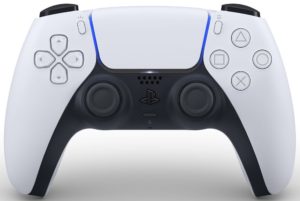 Sony has flirted with discontinuing the venerable DualShock line of controllers before, most notably when the PS3 made its public debut alongside the “Boomerang” controller. But despite occasionally stepping towards the road not taken, the consolemaker has always turned back towards the DualShock design.
Sony has flirted with discontinuing the venerable DualShock line of controllers before, most notably when the PS3 made its public debut alongside the “Boomerang” controller. But despite occasionally stepping towards the road not taken, the consolemaker has always turned back towards the DualShock design.
But there’s a first time for everything, so say hello to the DualSense, the official controller for the PS5.
Tossing aside the DualShock design for something that should look more familiar to Xbox One players, the DualSense has been rebuilt to feature adaptive triggers, haptic feedback, and a two-tone color scheme:
After thoughtful consideration, we decided to keep much of what gamers love about DualShock 4 intact, while also adding new functionality and refining the design. Based on our discussions with developers, we concluded that the sense of touch within gameplay, much like audio, hasn’t been a big focus for many games. We had a great opportunity with PS5 to innovate by offering game creators the ability to explore how they can heighten that feeling of immersion through our new controller. This is why we adopted haptic feedback, which adds a variety of powerful sensations you’ll feel when you play, such as the slow grittiness of driving a car through mud. We also incorporated adaptive triggers into the L2 and R2 buttons of DualSense so you can truly feel the tension of your actions, like when drawing a bow to shoot an arrow.
This provided us with an exciting challenge to design a new controller that builds off of the current generation, while taking into account the new features we were adding. For example, with adaptive triggers, we had to consider how the components would fit into the hardware, without giving it a bulky feeling. Our design team worked closely with our hardware engineers to place the triggers and actuators. The designers were then able to draw the lines of how the exterior of the controller would look and feel, with a challenge of making the controller feel smaller than it really looks. In the end, we changed the angle of the hand triggers and also made some subtle updates to the grip. We also took thoughtful consideration into ways to maintain a strong battery life for DualSense’s rechargeable battery, and to lessen the weight of the controller as much as possible as new features were added.
Slightly less noticeable is the repositioned Light Bar (it now sits under the Touchpad on the front of the controller) and the renamed Share button (the three lines symbolize that it’s the Create button now).
You can learn more about the DualSense controller at the PlayStation Blog.







